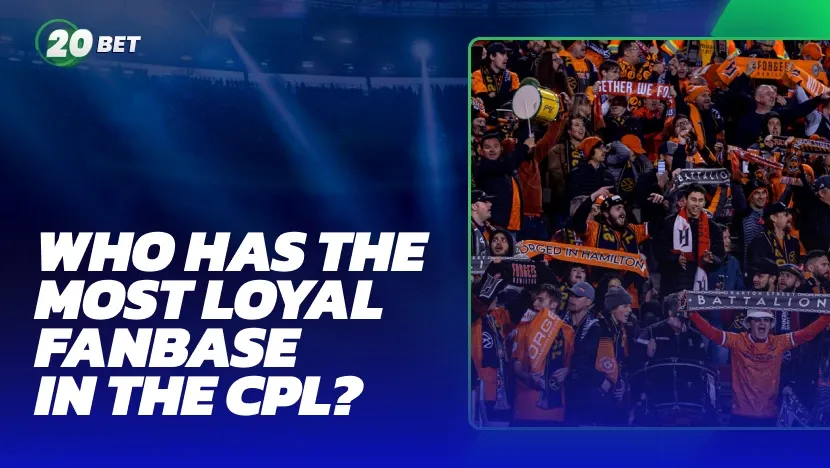Some people bet on teams. Smarter people bet on goals. Why? Because the scoreboard doesn’t lie. You can have the prettiest passing, better suits on the touchline, and more Twitter followers, doesn’t matter if the ball doesn’t hit the net. That’s where goal markets come in.
If you’re tired of trying to guess whether Nottingham Forest will suddenly remember how to play football, and would rather bet on something simple, like anyone will score, you’re in the right place.
Let’s break down BTTS, over/under, and clean sheet wagers in the only way it makes sense: like you’re not trying to impress a sportsbook, just beat it.
Goal Markets in Betting
Goal markets are like the cheat code section of a betting site. They don’t care who wins. They care who scores, how many times, and whether either defence is awake. These markets give you a shot at profit even in unpredictable games, especially when formations change or fatigue kicks in late.
And they’re everywhere. From Premier League grinders to random Tuesday night South American clashes, goal markets let you lean into tempo, execution, and good old-fashioned finishing.
BTTS (Both Teams to Score) Explained
This is the people’s market—simple, thrilling, and ideally suited for chaotic matchups. If you’ve ever watched a 1–1 draw and thought, “That was weirdly satisfying,” then BTTS is your kind of bet.
How BTTS Works
BTTS, or both teams to score, is precisely what it says: you win the bet if both sides score at least one goal during regular time. No need to pick a winner. Just root for chaos.
It’s one of the purest bets out there. No VAR complaints, no late-game drama ruining your spread—just goals. And it’s a dream when teams with shaky discipline, high intensity, and aggressive styles square off.
Popular BTTS Betting Strategies
Here’s what actual bettors look at:
- Leaky defences paired with strong attackers. (Duh.)
- Players’ stats in leagues like the Bundesliga, where games end 3–2 for no reason.
- Ref trends—some refs just love to let things play.
- Transition play styles. End-to-end football means more mistakes, more goals.
In short: pick teams that panic under pressure, love wide-open matches, and don’t really know what structure means. Think back to that wild Leeds vs. Bournemouth match in 2022, which ended 4–3, with seven different scorers and zero evidence of defensive coaching. If you had BTTS locked in, you were cashing out before your tea got cold.
Pros and Cons of BTTS Bets
Pros:
- Fun to follow. You’re cheering for everyone to screw up.
- Doesn’t matter who wins.
- Profitable if you know the tactics and momentum of each side.
Cons:
- One bad conversion rate and your bet’s dead.
- Goalkeeper plays the game of his life? Tough luck.
- Late substitution of a key striker? You’re toast.
Still, BTTS betting thrives when the match script feels right. And with solid BTTS tips, it can be gold.
Over/Under Goals Market
This is where math meets mayhem. You’re not cheering for a team—you’re rooting for a number. It’s logical, yes, but still wildly unpredictable when someone skies a sitter in the 89th minute.
Basics of Totals Betting
Welcome to the land of numbers: the over-under betting market. You’re not picking who wins, you’re predicting how many goals we’ll see. Books set a line—usually 2.5—and you bet whether the total bet lands over or under that number. That’s it. Sounds simple, right?
Well, yes… until a missed sitter ruins your over or a junk-time goal tanks your under. But that’s betting. Take the infamous England vs. Iran World Cup 2022 opener. The over/under was set at 2.5. England went 4–0 up, then Iran scored twice in injury time to push the total to 6 goals. If you had the under… well, condolences.
That’s the magic, and madness, of betting totals.
Key Metrics for Predicting Over/Under Outcomes
You want to nail over-under betting? Start here:
- NHL players’ stats on shots on goal? Helps you understand attacking trends.
- NBA players’ stats? Surprisingly useful for tempo and pace predictions, same logic applies in high-scoring football teams.
- Expected Goals (xG) and shot conversion.
- How teams handle high-intensity matches.
- Recovery time between games—sluggish legs lead to more mistakes (and goals).
Then add some real-world logic. Is the manager playing to save his job or just experimenting? That changes things fast. Like when in late 2023, Chelsea suddenly started fielding ultra-attacking lineups under pressure to “play exciting football.”
What followed? A string of chaotic 4-1, 3-2, and 2-2 matches where the over hit like clockwork. Metrics were useful, but knowing the context made all the difference.
Common Mistakes in Betting Totals
- Ignoring fatigue. Teams on short rest rarely hit their peak.
- Forgetting to check the weather and pitch conditions.
- Assuming that over-under odds reflect game reality. Spoiler: they don’t always.
Also, if you’re wondering: does over-under include overtime? Not unless the sportsbook says so. For most bets, only regular time counts.
Clean Sheet Predictions
It’s the least sexy bet in the book—but sometimes the smartest. You’re banking on boredom, solid lines, and a back four that actually talks to each other.
Understanding Clean Sheet Bets
A clean sheet bet means you’re backing a team to concede zero goals. Sounds risky? It is—unless you know what to look for.
These bets rely on discipline, coordination, and frankly, a boring game. You’re rooting for nothing to happen. It’s weirdly satisfying.
Example? A personal favorite: I once backed Atlético Madrid to keep a clean sheet at home against Getafe. Simeone parked the bus before kickoff, the midfield played in reverse, and Jan Oblak barely had to wash his gloves. Final score? 1–0. No chaos, no drama, just slow, defensive efficiency and a winning ticket.
Best Leagues and Teams for Clean Sheet Wagers
Italy’s Serie A, certain La Liga sides, and occasionally top teams at home—these are your best friends. Use clean sheet predictions when you see a big favorite facing a low-energy opponent on short rest.
In Serie A, teams like Juventus and Inter are notoriously stingy at home. Remember when Juve hosted Empoli in early 2023? Empoli barely made it past the halfway line. That was a clean sheet if you ever saw one.
In La Liga, Atlético Madrid and Real Sociedad are usually good for this type of bet, especially against mid-table teams like Cádiz or Almería.
For the “top teams at home” angle, think Manchester City hosting a newly promoted side, or Bayern playing Augsburg at the Allianz. When the opposition has tired legs and no plan, you’re betting on resilience and a one-sided tactical display.
Also, check resilience stats. Some teams fold under pressure, others bunker down and refuse to break.
I’m talking about Tottenham vs. Newcastle in April 2023. Spurs conceded five goals in 21 minutes. Twenty-one. They completely imploded under early intensity, no structure, no coordination, just chaos. If you’d bet Newcastle to keep a clean sheet—or at least dominate without reply—it would’ve felt like stealing.
Defensive Stats to Watch For
If you’re betting clean sheet, think like a coach, not a fanboy.
Here’s what actually matters:
- Shots allowed inside the penalty area. Not all shots are created equal. A team that concedes 15 long-range potshots isn’t nearly as risky as one giving up five one-on-ones per game.
- Blocked shots and defensive duels won. These show discipline and coordination, two traits you want when you’re betting on nothing to happen.
- Clearances, interceptions, and recoveries. These help you read a team’s ability to reset under pressure.
- Keeper form. If the goalkeeper is hot, ride that wave. If they just fumbled three crosses and picked up a yellow for time-wasting, maybe not.
Bonus tip: Don’t just look at goals conceded. Dig into conversion rates from shots. A team that gives up lots of chances but few goals might just be getting lucky. That luck runs out.
Which is Better for a Newbie?
Start with BTTS or over under. They’re easier to follow, and you’ll learn fast what affects outcomes, like stamina, late-match movement, and emotional aggression during derbies.
Clean sheet bets are higher risk and less forgiving. If you’re new, you want action, not frustration. Build your feel for game tempo, accuracy, and dominance before getting too surgical.
Responsible Gambling
Look—we’re not your financial advisor. If you’re betting on goals, do it like someone who doesn’t want to be broke by Wednesday.
Here are a few reminders that work:
- Use a separate bankroll. Don’t mix your rent money with your “this team’s due” fund.
- Set loss limits, not just bet limits. One bad day shouldn’t wipe you out.
- Watch the signs. If you’re staking just to feel something, it’s time to take a break.
- Keep betting fun. It should feel like a smart challenge, not a source of stress or a test of your emotional resilience.
If things ever feel off, there are tools and services to help. No shame. No judgment.
FAQ
What does BTTS mean in betting?










